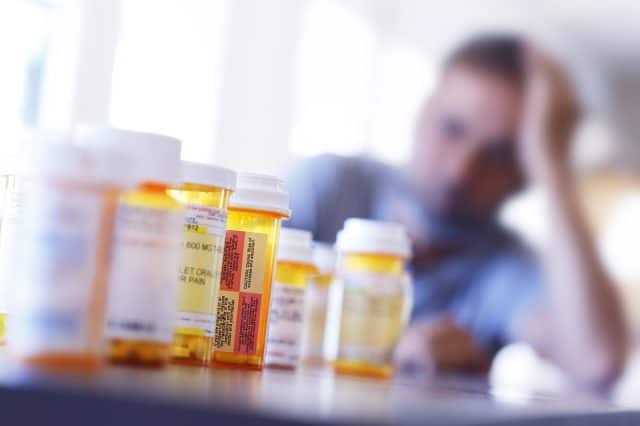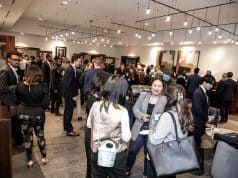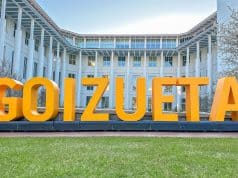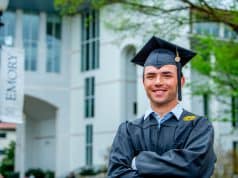A new wave of medications meant to treat Type II diabetes is grabbing headlines around the world for their ability to help people lose a significant amount of weight. They are called GLP-1 receptor agonists. By mimicking a glucagon-like peptide (GLP) naturally released by the body during digestion, they not only lower blood sugar but also slow digestion and increase the sense of fullness after eating.
The two big names in GLP-1 agonists are Ozempic and Wegovy, and both are a form of semaglutide. Another medication, tirzepatide, is sold as Mounjaro and Zepbound. It is also a glucose-dependent insulinotropic polypeptide (GIP) agonist as well as GLP-1.
Physicians have been prescribing semaglutide and tirzepatide with increasing frequency. However, both medications come with a host of side effects, including nausea and stomach pain, and are not suitable for every patient. Many clinics and physicians do not have immediate access to expert second opinions, as do the physicians at Emory Healthcare.
Creating a Digital Twin
That lack of an expert is one of the reasons Karl Kuhnert, professor in the practice of organization and management at Emory University’s Goizueta Business School, is using artificial intelligence to capture the expertise of physicians like Caroline Collins MD through the Tacit Object Modeler™, or TOM. By using TOM, developed by Merlynn Intelligence Technologies, Kuhnert and Collins can create her “decision-making digital twin.” This allows Collins to reveal her expertise as a primary care physician with Emory Healthcare and an Assistant Professor at Emory School of Medicine, where she has been leading the field in integrating lifestyle medicine into clinical practices and education.
Traditional AI, like ChatGPT, uses massive amount of data points to predict outcomes using what’s known as explicit knowledge. But it isn’t necessarily learning as it goes. According to Kuhnert, TOM has been designed to learn how an expert, like Collins, decides whether or not to prescribe a drug like semaglutide to a patient. Wisdom or tacit knowledge is intuitive and rooted in experience and context. It is hard to communicate, and usually resides only in the expert’s mind. TOM’s ability to “peek into the expert’s mind makes it a compelling technology for accessing wisdom.”
“Objective or explicit knowledge is known and can be shared with others,” says Kuhnert.
For example, ChatGPT uses explicit knowledge in its answers. It’s not creating something new. It may be new to you as you read it, but somebody, somewhere, before you, has created it. It’s understood as coming from some source.
Karl Kuhnert
“Tacit knowledge is subjective wisdom. Experts offer this, and we use their tacit know-how, their implicit knowledge, to make their decisions. If it were objective, everyone could do it. This is why we hire experts: They see things and know things others don’t; they see around corners.”
Mimicking the Mind of a Medical Expert
Teaching TOM to see around the corners requires Collins to work with the AI over the course of a few days. “Essentially what I do is I sit down with, in this case, a physician, and ask them, ‘What are thinking about when you make this decision?'” says Kuhnert. “The layperson might think that there are hundreds of variables in making a medical decision like this. With the expert’s tacit knowledge and experience, it is usually between seven and twelve variables. They decide based on these critical variables,” he says.
These experts have so much experience, they can cut away a lot of the noise around a decision and get right to the point and ask, ‘What am I looking at?’
Karl Kuhnert
As TOM learns, it presents Collins with more and different scenarios for prescribing semaglutide. As she makes decisions, it remembers the variables present during her decision-making process. “Obviously, some variables are going to be more important than other variables. Certain combinations are going to be challenging,” says Collins. “Sometimes there are going to be some variables where I think, yes, this patient needs a GLP-1. Then there may be some variables where I think, no, this person really doesn’t need that. And which ones are going to win out? That’s really where TOM is valuable. It can say, okay, when in these difficult circumstances where there are conflicting variables, which one will ultimately be most important in making that decision?”
The Process: Trusting AI
After working with TOM for several hours, Collins will have reacted to enough scenarios for TOM to learn to make her decision. The Twin will need to demonstrate that it can replicate her decision-making with acceptable accuracy—high 90s to 100 percent. Once there, Collins’ Twin is ready to use.
“I think it’s important to have concordance between what I would say in a situation and then what my digital twin would say in a situation because that’s our ultimate goal is to have an AI algorithm that can duplicate what my recommendation would be given these circumstances for a patient,” Collins says. “So, someone, whether that be an insurance company, or a patient themselves or another provider, would be able to consult TOM, and in essence, me, and say, in this scenario, would you prescribe a GLP-1 or not given this specific patient’s situation?”
The patient’s current health and family history are critical when deciding whether or not to prescribe semaglutide. For example, according to Novo Nordisk, the makers of Ozempic, the drug should not be prescribed to patients with a history of problems with the pancreas or kidneys or with a family history of thyroid cancer. Those are just the start of a list of reasons why a patient may or may not be a good candidate for the medication.
Kuhnert says, “What we’re learning is that there are so many primary care physicians right now that if you come in with a BMI over 25 and are prediabetic, you’re going to get (a prescription). But there’s much more data around this to suggest that there are people who are health marginalized, and they can’t do this. They should not have this (medication). It’s got to be distributed to people who can tolerate it and are safe.”
Accessing the Digital Twin on TOM
Collins’s digital twin could be available via something as easy to access as an iPhone app. “Part of my job is to provide the latest information to primary care physicians. Now, I can do this in a way that is very powerful for primary care physicians to go on their phones and put it in. It’s pretty remarkable, according to Colllins.”
It is also transparent and importantly sourced information.
Any physician using a digital twin created with TOM will know exactly whose expertise they are accessing, so anyone asking for a second opinion from Colllins will know they are using an expert physician from Emory University.
In addition to patient safety, there are a number of ways TOM can be useful to the healthcare industry when prescribing medications like semaglutide. This includes interfacing with insurance companies and the prior approval process, often lengthy and handled by non-physician staff. “Why is a non-expert at an insurance company determining whether a patient needs a medication or not? Would it be better to have an expert?” says Collins. “I’m an expert in internal medicine and lifestyle medicine. So, I help people not only lose weight, but also help people change their behaviors to optimize their health. My take on GLP-1 medications is not that everyone needs them, it’s that they need to be utilized in a meaningful way, so patients will get benefit, given risks and benefits for these medications.”
The Power of a Second Opinion
Getting second, and sometimes third, opinions is a common practice among physicians and patients both. When a patient presents symptoms to their primary care physician, that physician may have studied the possible disease in school but isn’t necessarily an expert. In a community like Emory Healthcare, the experts are readily available, like Collins. She often serves as a second opinion for her colleagues and others around the country.
“What we’re providing folks is more of a second opinion. Because we want this actually to work alongside someone, you can look at this opinion that this expert gave, and now, based on sourced information, you can choose. This person may be one of the best in the country, if not the world, in making this decision. But we’re not replacing people here. We’re not dislocating people with this technology. We need people. We need today’s and tomorrow’s experts as well,” according to Kuhnert.
But also, you now have the ability to take an Emory physician’s diagnosing capabilities to physicians in rural areas and make use of this information, this knowledge, this decision, and how they make this decision. We have people here that could really help these small hospitals across the country.
Caroline Collin MD
Rural Americans have significant health disparities when compared to those living in urban centers. They are more likely to die from heart disease, cancer, injury, chronic respiratory disease, and stroke. Rural areas are finding primary care physicians in short supply, and patients in rural areas are 64 percent less likely to have access to medical specialists for needed referrals.
Smaller communities might not have immediate access to experts like a rheumatologist, for example. In addition, patients in more rural areas might not have the means of transportation to get to a specialist, nor have the financial means to pay for specialized visits for a diagnosis. Collins posits that internal medicine generalists might suspect a diagnosis but want to confirm before prescribing a course of treatment.
“If I have a patient for whom I am trying to answer a specific question, ‘Does this patient have lupus?’, for instance. I’m not going to be able to diagnose this person with lupus. I can suspect it, but I’m going to ask a rheumatologist. Let’s say I’m in a community where unfortunately, we don’t have a rheumatologist. The patient can’t see a rheumatologist. That’s a real scenario that’s happening in the United States right now. But now I can ask the digital twin acting as a rheumatologist, given these variables, ‘Does this patient have lupus?’ And the digital twin could give me a second opinion.”
Sometimes, those experts are incredibly busy and might not have the physical availability for a full consult. In this case, someone could use TOM to create the digital twin of that expert. This allows them to give advice and second opinions to a wider range of fellow physicians.
As Kuhnert says, TOM is not designed or intended to be a substitute for a physician. It should only work alongside one. Collins agreed, saying, “This doesn’t take the place of a provider in actual clinical decision-making. That’s where I think someone could use it inappropriately and could get patients into trouble. You still have to have a person there with clinical decision-making capacity to take on additional variables that TOM can’t yet do. And so that’s why it’s a second opinion.”
“We’re not there yet in AI says Collins. We have to be really careful about having AI make actual medical decisions for people without someone there to say, ‘Wait a minute, does this make sense?’”
AI Implications in the Classroom and Beyond
Because organizations use TOM to create digital twins of their experts, the public cannot use the twins to shop for willing doctors. “We don’t want gaming the system,” says Collins. “We don’t want doctor shopping. What we want is a person there who can utilize AI in a meaningful way – not in a dangerous way. I think we’ll eventually get there where we can have AI making clinical decisions. But I don’t think I’d feel comfortable with that yet.”
The implications of using decision-making digital twins in healthcare reach far beyond a second opinion for prescription drugs. Kuhnert sees it as an integral part of the future of medical school classrooms at Emory. In the past, teaching case studies have come from books, journals, and papers. Now, they could come alive in the classroom with AI simulation programs like TOM.
I think this would be great for teaching residents. Imagine that we could create a simulation and put this in a classroom, have (the students) do the simulation, and then have the physician come in and talk about how she makes her decisions.
Karl Kuhnert
“And then these residents could take this decision, and now it’s theirs. They can keep it with them. It would be awesome to have a library of critical health decisions made in Emory hospitals,” Kuhnert says.
Collins agreed. “We do a lot of case teaching in the medical school. I teach both residents and medical students at Emory School of Medicine. This would be a really great tool to say, okay, given these set of circumstances, what decision would you make for this patient? Then, you could see what the expert’s decision would have been. That could be a great way to see if you are actually in lockstep with the decision-making process that you’re supposed to be learning.”
Kuhnert sees decision-making twins moving beyond the healthcare system and into other arenas like the courtroom, public safety, and financial industries and has been working with other experts to digitize their knowledge in those fields.
The way to think about this is: say there is a subjective decision that gets made that has significant ramifications for that company and maybe for the community. What would it mean if I could digitize experts and make it available to other people who need an expert or an expert’s decision-making?
Karl Kuhnert
“You think about how many people aren’t available. Maybe you have a physician who’s not available. You have executives who are not available. Often expertise resides in the minds of just a few people in an organization,” says Kuhnert.
“Pursuing the use of technologies like TOM takes the concept of the digital human expert from simple task automation to subjective human decision-making support and will expand the idea of a digital expert into something beyond our current capabilities,” Kuhnert says. “I wanted to show that we could digitize very subjective decisions in such areas as ethical and clinical decision-making. In the near future, we will all learn from the wisdom codified in decision-making digital twins. Why not learn from the best? There is a lot of good work to do.”
Goizueta faculty apply their expertise and knowledge to solving problems that society—and the world—face. Learn more about faculty research at Goizueta.











